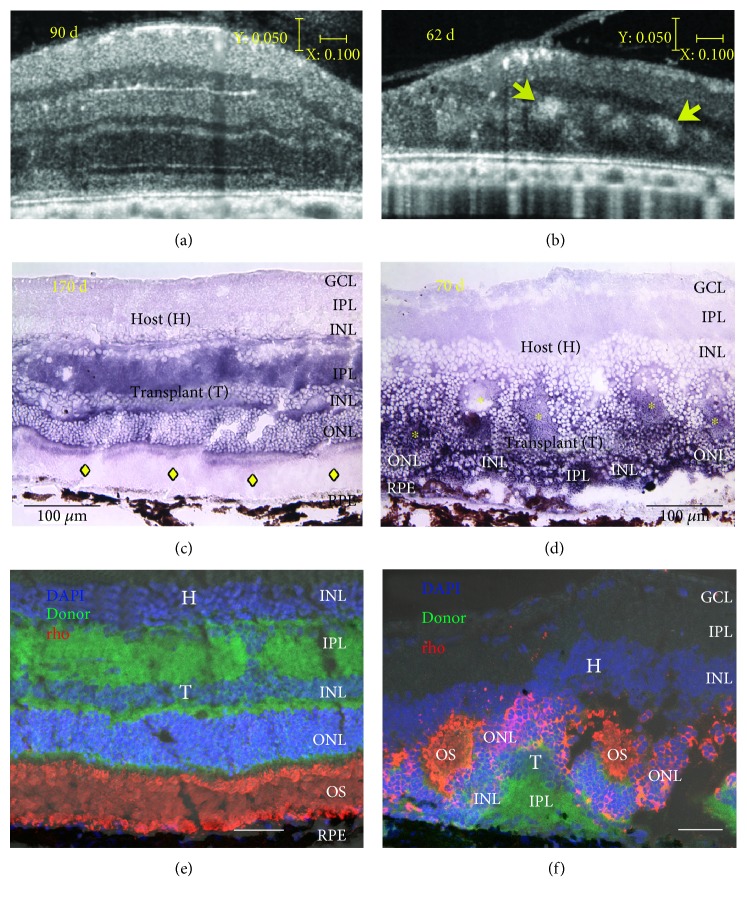Figure 2.
Correlation of live SD-OCT imaging with histology. Fetal retinas (embryonic day 19) derived from rats expressing human placental alkaline phosphatase (hPAP) in the cytoplasm of all cells were transplanted to the subretinal space of immunodeficient retinal degenerate rho S334ter-3 rats. Transplanted rats' eyes were imaged in vivo by SD-OCT. Two transplant examples are shown. (a, b) Stretched cross-sectional B-scans of laminated (a) and rosetted (b) transplant to better distinguish different retinal layers. Rosettes are indicated by yellow arrows (b) and seen as hyperreflective orbs. (c, d) Transplant-specific histochemistry for hPAP using BCIP (purple). hPAP is expressed in the cytoplasm (not the nuclei) of donor cells. Transplant number 5 (a, c, e) has a large area of lamination parallel retinal layers with photoreceptor outer segments, indicated by yellow diamonds (c) and strong rhodopsin expression (e) in the donor outer retina. Transplant number 1 (b, d, f) is more disorganized with photoreceptors in rosettes [rosette lumens indicated by yellow asterisks in (d)]. The rhodopsin-positive outer segments face inward (f). This transplant (d) was partially placed upside down in the subretinal space. (a, b) Scale bars: vertical bar: 50 μm; horizontal bar: 200 μm; (c, d): 100 μm; (e, f) bars: 20 μm. Modified after Figure 3 of Seiler et al. vision recovery and connectivity by fetal retinal sheet transplantation in an immunodeficient retinal degenerate rat model, IOVS 2017;58:614–630. DOI:10.1167/iovs.15-19028; licensed under the Creative Commons attribution license.

